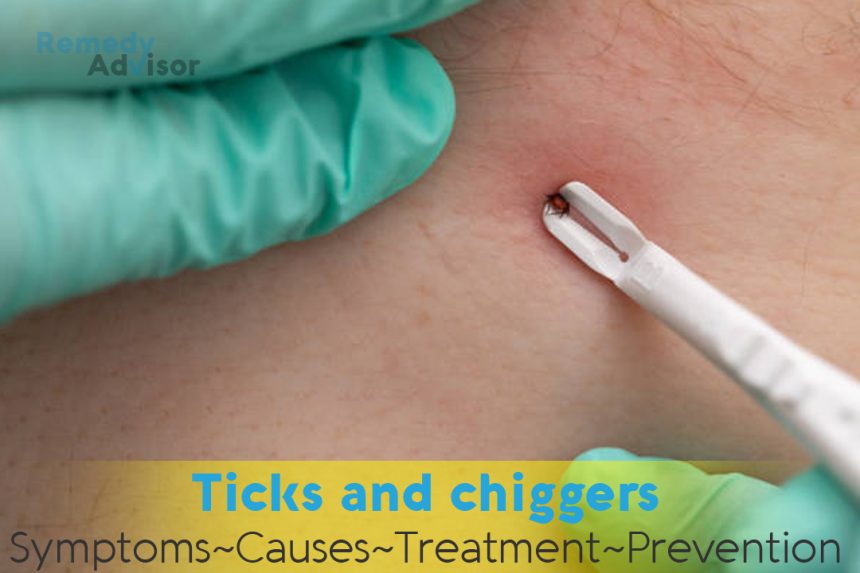What is it
Ticks and chiggers are biting parasitic creatures that can cause disease (in the case of ticks) or a strong allergic reaction (in the case of chigger mites).
Ticks probably exceed all other pests in the variety of diseases they transmit to man and domestic animals. Tiny, wingless, louse like creatures, the) range in color from brown to gray and from one-sixteenth to one-quarter inch in length. Many species are known to carry diseases such as Rocky Mountain spotted fever, tularemia, Colorado tick fever, Lyme dis ease and babesiosis, which they can spread by nourishing off the blood of their hosts. They occur in every part of the United States, though large numbers are concentrated in certain areas.
Chigger mites hatch in April in the northern United States (year-round in warmer climes). They do not, as ticks do, feed off blood, nor do they spread disease. But the enzymes they secrete can cause an allergic reaction resulting in two weeks or more of intense itching which leads to scratching that may result in serious bacterial infection.
Symptoms
- Chigger bite: red rash with intense itching; chiggers may be visible in the center of unscratched bumps. Hives, blisters, and swelling may also occur.
- Tick bite: visible presence of a tick in the skin; slight stinging, but relatively painless.
- Onset of fever, headache, chills, joint stiff-ness, muscle aches and pains, and rashes.
What causes it
People usually pick up ticks and chiggers from woodsy underbrush, tall grass, and the fur of free-ranging pets.
The tick brushes against some part of the body and looks for a place to settle. It then bites the skin, embeds its head, and taps into a blood source, such as a small vein or capillary. As it feeds, the external part of its body swells to as much as three times its original size. The bite is relatively painless; the real danger is the viruses or bacteria that the tick may harbor and that may infect you.
Chigger mite larvae climb the nearest plant and wait for a bird, snake, small animal, or human to brush by. The mite drops off the plant and attaches itself with a pair of jaw-like claws.
It doesn’t burrow, like a tick, but clings for about three days before dropping off. During that time it feeds by secreting enzymes that liquefy skin cells; these enzymes cause the initial symptoms of redness and itching.
What if you do nothing
Tick bites may lead to Lyme disease or Rocky Mountain spotted fever. If you’re bitten by a tick, you need to be alert for any developing symptoms and contact your physician immediately. Chigger bites lead to an aggravating itch that can last for weeks; constantly scratching the itch can lead to a bacterial infection.
Home remedies
For ticks
Remove the tick immediately
The sooner a tick is removed, the smaller the likelihood any infectious organisms will be transferred. Don’t try to remove a tick with naked fingers; bacteria from a crushed tick might be able to enter even unbroken skin. Instead, use a pair of fine-tipped tweezers. If you can-not get the tick out, call a doctor.
Wash the bite area
Use soap and water.
Relieve the discomfort
An ice pack as well as calamine lotion will relieve any pain or itching.
For chiggers
Remove the mite
If a chigger mite attaches it-self to you it will look like a tiny red fleck a needle, small knife, or even your fingernail will remove it.
Try starch baths and calamine lotion
These two remedies can help relieve the persistent itch from chigger bites.
Don’t scratch
Scratching a chigger bite increases the risk of infection.
Prevention
The best treatment for chiggers and especially ticks is to ward them off. Take these precautions.
Dress protectively
If you’re hiking through grass or underbrush, fend off chigger mites and ticks by wearing a long-sleeved shirt secured at the wrist, waist, and throat; tuck your pants into your socks or boots. Cover your body as much as possible.
Wear light-colored, firmly laced cloths: it’s simpler to spot ticks on white or tan jeans than on dark ones, and the ticks may not be capable to grip onto the tight weave of slick materials like nylon. A hat may help, too, since ticks like to settle on the scalp.
Use insect repellent
One of the best ways to ward off chiggers and ticks is to use an insect repellent containing DEET. Also available are tick repellents that contain permethrin. The permethrin-based repellents are sprayed on clothing, not skin, and are effective for up to two weeks, even after laundering.
Check yourself
Inspect your skin and clothing occasionally for ticks, especially when you’re in underbrush or forests. Ticks often crawl around on clothing or even on the skin for a long time before they bite. Later do a thorough check of your entire body. Have someone look at your back and head, if possible, or use two mirrors.
Try to stay near the center of trails
In over-grown countryside, walking in cleared areas reduces your risk.
Shower and shampoo after your outing
This may help remove ticks and chiggers that haven’t yet begun to feed. Check your clothes too; wash them immediately to remove any ticks that may be hidden in creases. Inspect any gear you were carrying.
Check pets after they’ve been outdoors
Remove ticks from them as you would from yourself.
Inspect your children
Check them over daily for ticks, perhaps before they go to bed. This is especially important during the summer, when they spend lots of time outdoors.







